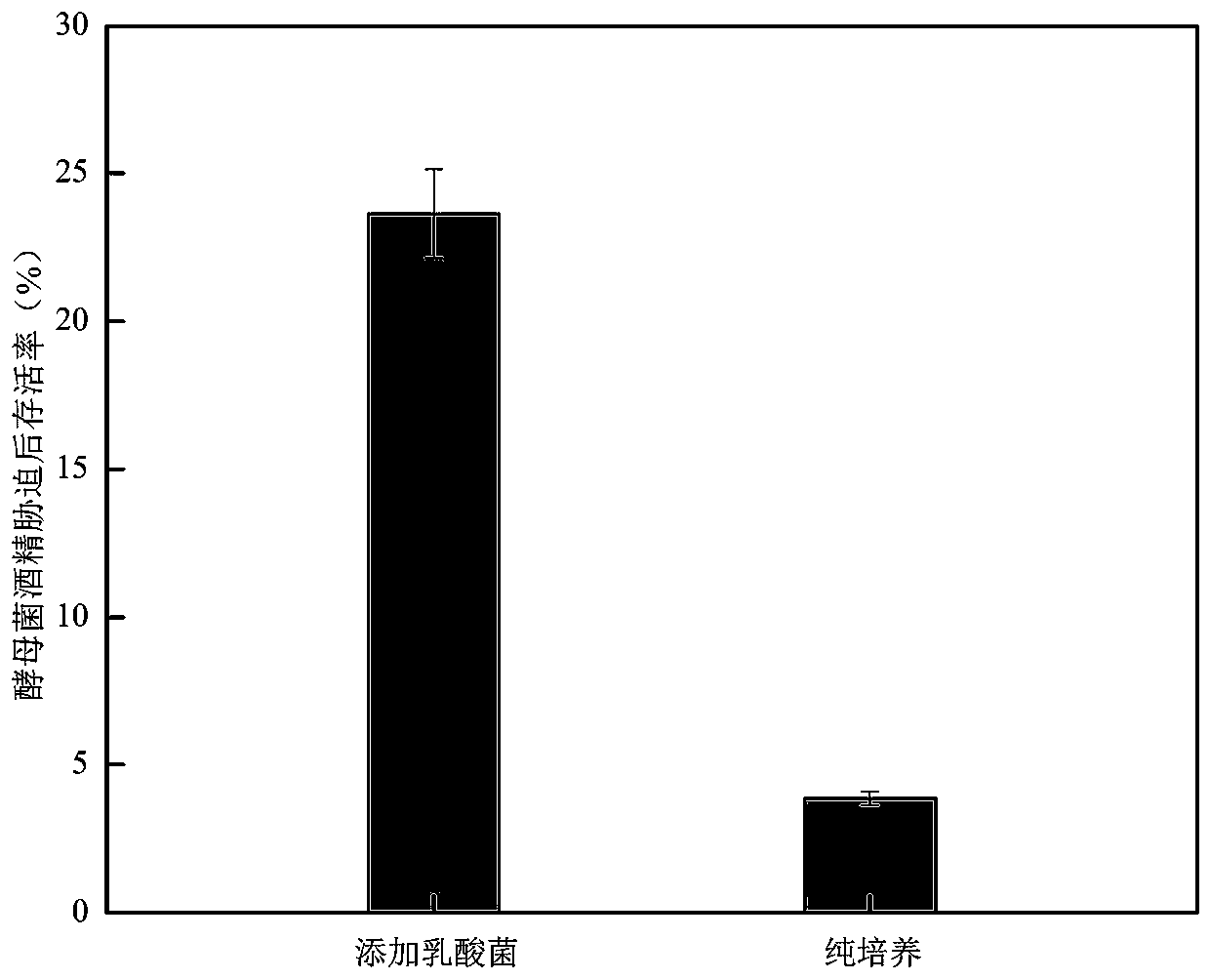Method for improving alcohol tolerance of yeast by utilizing lactic acid bacteria
A technology of yeast and lactic acid bacteria, applied in the field of bioengineering, can solve problems such as affecting food production efficiency, inhibiting cell survival, growth and fermentation activity, yeast poisoning, etc., to improve alcohol tolerance, improve growth performance, and high survival. rate effect
- Summary
- Abstract
- Description
- Claims
- Application Information
AI Technical Summary
Problems solved by technology
Method used
Image
Examples
example 1
[0014] Example 1: Lactic acid bacteria Tetragenococcus halophilus CGMCC 3792 added to yeast Zygosaccharomyces rouxii Mixed culture in CGMCC 3791 culture system for 4 h. After alcohol treatment, the number of yeast colonies counted on the YPD agar medium added with 0.01% chloramphenicol was used to calculate the survival rate ( figure 1 ).
[0015] The glycerin tube stock solution of lactic acid bacteria and yeast stored at -80°C was taken respectively, and inoculated into 5 mL of lactic acid bacteria medium and yeast medium according to the inoculum amount of 20%, cultured at 30°C for 24 hours, and then inoculated with 5% The inoculum was transferred to 100 mL of lactic acid bacteria medium and yeast medium, and cultured at 30°C for 24 h. The two culture solutions were centrifuged at 10,000 rpm at 4°C for 5 min to collect the bacterial cells, and both were resuspended in 4 mL of sterile water. 0.5 mL of yeast suspension was inoculated into the mixed culture medium, and...
example 2
[0016] Example 2: Yeast Zygosaccharomyces rouxii CGMCC 3791 pure culture. After alcohol treatment, count the number of yeast colonies on the YPD agar medium, and calculate the survival rate ( figure 1 ).
[0017] Take the storage solution of yeast stored at -80°C in glycerol tubes, inoculate 20% of the inoculum into 5 mL of yeast culture medium, culture at 30°C for 24 hours, and transfer to 100 mL of yeast at 5% of the inoculum culture medium at 30°C for 24 hours. Centrifuge the seed solution at 10,000 rpm at 4°C for 5 min to collect the bacteria, resuspend it in 4 mL of sterile water, take 0.5 mL of it and inoculate it into 30 mL of mixed culture medium, and culture at 30°C for 4 h . Take 2 mL of the culture solution in two 5 mL EP tubes, centrifuge at 10,000 rpm, 4°C for 5 min, and discard the supernatant. Add 4 mL of normal saline and 4 mL of normal saline containing 8% (v / v) alcohol respectively, and let stand at 30°C for 90 min. Centrifuge the treated bacterial su...
PUM
 Login to View More
Login to View More Abstract
Description
Claims
Application Information
 Login to View More
Login to View More - R&D
- Intellectual Property
- Life Sciences
- Materials
- Tech Scout
- Unparalleled Data Quality
- Higher Quality Content
- 60% Fewer Hallucinations
Browse by: Latest US Patents, China's latest patents, Technical Efficacy Thesaurus, Application Domain, Technology Topic, Popular Technical Reports.
© 2025 PatSnap. All rights reserved.Legal|Privacy policy|Modern Slavery Act Transparency Statement|Sitemap|About US| Contact US: help@patsnap.com

